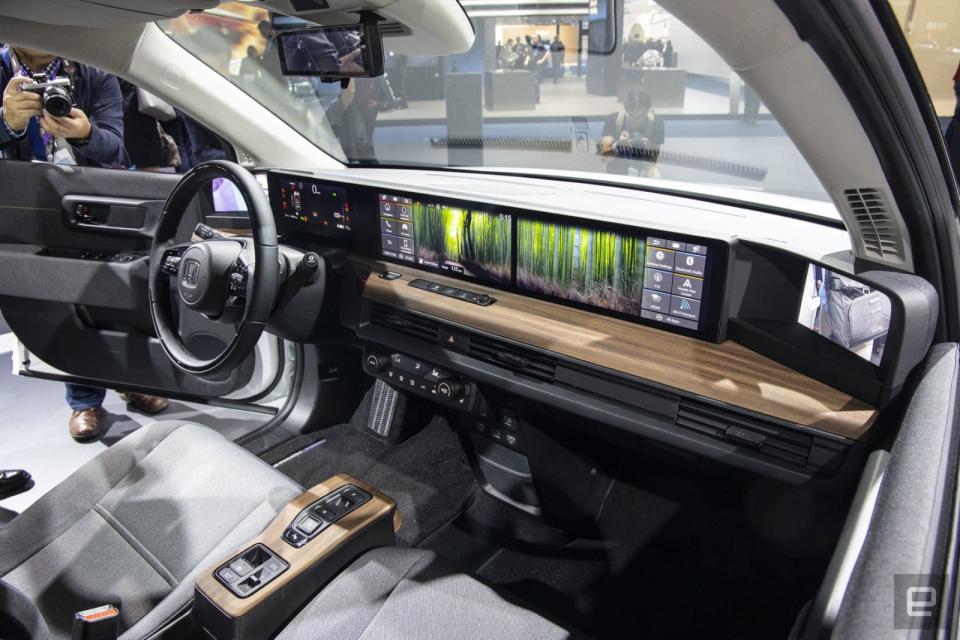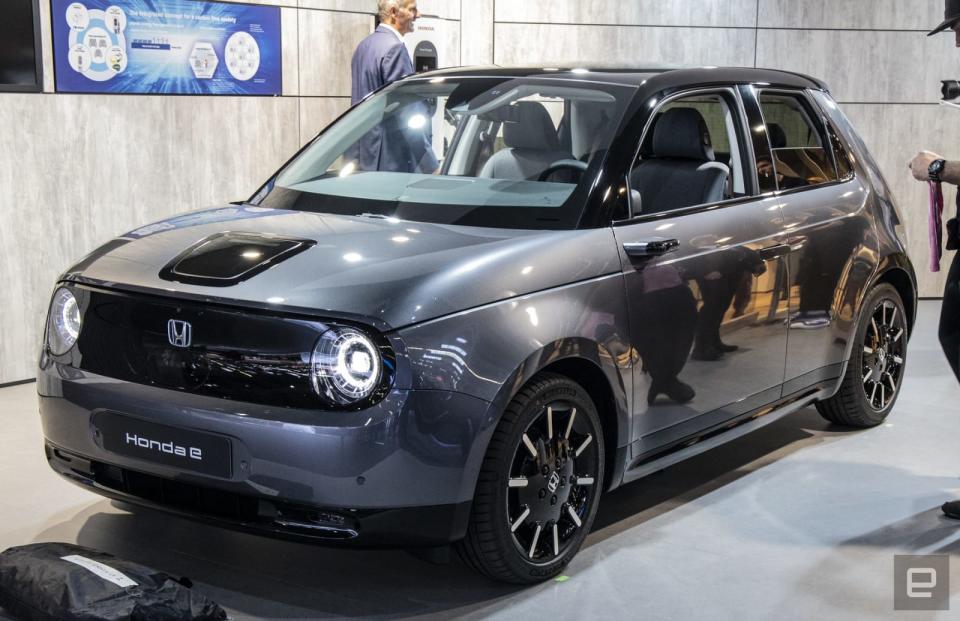The uphill battle to build Honda’s first modern EV
"All that criticism drove us to bring something completely different."
Honda, like Toyota, has a troubled history with EVs. After pioneering them with the EV Plus in 1997 then releasing a very limited edition Fit EV, it's been radio silence from the company ever since. Now at the Frankfurt Motor Show, Honda has finally built a modern electric car that it plans to sell: the Honda E.
This Europe-only EV won't be sold in the US, but it sure has attracted a lot of attention. Honda fans are eating up the retro-adorable styling, and the interior will be impressively high tech for a production vehicle. On the other hand, it's expensive and can't go nearly as far on a charge as rivals. These decisions might seem at odds with other automakers, but as the design team explained to me, Honda hopes that urbanites will love the technology and sportiness enough to forgive the lower range.
The Honda E's primary competition is the Renault Zoe, which costs £25,670 (around $31,900 after UK rebates), compared to £26,160 for the Honda E (about $32,300). However, while the Zoe packs a 52 kWh battery that takes it around 186 miles, the Honda E's 35.5 kWh battery will power it just 137 miles
Honda no doubt did this to save some money, given that EV batteries represent a huge chunk of the cost of building a car. It's also fair to say that Honda vehicles usually command a premium price because of their bank-vault-like quality. Still, that's quite a gap in range.
Honda did put some of that money to good use. The interior is incredibly futuristic for a compact car (for any car, really). It packs concept-like features, including a dashboard-wide display with dual 12.3-inch LCD touchscreens that act as primary infotainment displays. In place of the regular side mirrors, it's got a high-tech camera mirror system with two six-inch screens mounted at the far left and right side of the dashboard. That's a first for any compact car, Honda said. In that sense, the Honda E trumps the much more basic Renault Zoe, and even the Leaf, by a long shot.

The question is, will customers care? Honda is certainly confident. "Our official story is that it's quite a unique car," said energy management head Jorgen Pluym. "While the Zoe will have some similar use cases, we think that with all the tech in this car, it has an additional appeal that justifies the higher price tag."
The sportiness and high-tech interior make the Honda E an attractive car, but when it comes to energy management, Honda is telling a story that more mature EV companies have given up on.
"This car is really meant for urban environments, and has a small battery package that makes it much more nimble and agile, and that is really the concept of this car," said Pluym. "Most people commute and go to town and go shopping, and you can charge at home every night, so there's no need to carry a larger battery for most people."
To that end, Honda is working with Ubitricity in the UK to get access to around 1,800 chargers installed in light posts around the UK. That'll make it a lot more practical to own a Honda E in the city, without the need for a garage or remote public charger.
However, that was Renault's pitch for the Zoe when it had a 41 kWh battery pack. Then, due to consumer demand, the French car manufacturer enlarged it in 2019 to 52 kWh to make it more versatile. At the same time, it has kept the same price.

It might be better to look at the Honda E as the first step for a notoriously conservative car company. Connectivity boss Mirai Aki said that the project faced headwinds from the very start and laughed when a journalist asked if the project was "fun." Instead, the design team struggled against upper management, particularly since Honda has been so adamantly against EVs over the last half a dozen years, instead pursuing hydrogen and other tech.
"There were a lot of people [inside Honda] against this project," he said. "When you're receiving all those critical comments from the board, you feel like you're being treated badly."
Luckily, they persisted and managed to find a formula to gain public support for the project while turning out a vehicle that seems to justify the premium, despite the lack of range. Taking that unconventional approach also allowed them to turn the E into a calling card for Honda's fledgling Vision 2025 electrification program. By focusing on design, driving fun and technology, Honda is betting its biggest fans will pay a premium for an EV that's different from everything else on the market.
After spending some time with the Honda E in Frankfurt, I think the company appears to have made a wise choice. The wow factor with the EV, both from the inside and outside, is very high. The futuristic interior, voice control and other tech actually looks like it will be enjoyable and even practical for the digital natives it's aimed at. And many of those folks do live in cities where the car makes the most sense.
While Aki admitted there's room for improvement in the pricing, the designers were satisfied with the final result. "We wanted to demonstrate Honda's capability in looks, technology and driving ability," he said. "All that criticism drove us to bring something completely different. That's what we wanted to express with that car."
Update 9/11/2019 7:35 AM ET: The prices shown in the article have been updated to reflect the prices after the government grant for both the Honda E and Renault Zoe. The original article showed the Honda E as costing £3,000 ($3,500) more than the Zoe, which is not the case.


